Rolls-Royce Phantom Series II
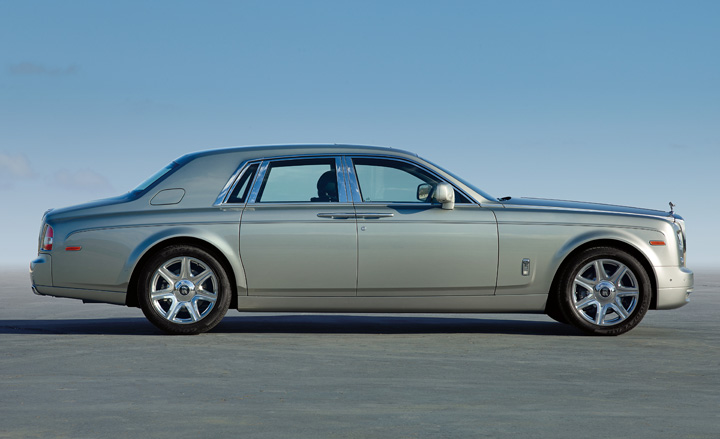
There was a brief moment, back in the early noughties, when Retro design truly came of age. The success of BMW's reincarnated MINI led the charge of new models from a variety of manufacturers, all of which had been nipped and tucked to bear not just a mere nod of family resemblance of cars gone by, but something approaching a near facsimile, albeit smoothed out for the benefit of aerodynamics, beefed up for crash protection and shorn of most of the idiosyncrasies that memory tends to amplify and turn into fond reminiscences.
One new car glided serenely above all these old school wannabees. The Rolls-Royce Phantom, introduced in 2003, was a behemoth, a deliberately provocative piece of automotive form making that celebrated privilege and the maxim 'might is right'. The Phantom was largely concocted in the Munich and California brand-building laboratories of BMW's DesignWorks studios. It wore its influence on its hefty sleeves, chose to use size as a virtue, and all the while echoed the Sixties adman genius of David Ogilvy, who used his celebrated Rolls-Royce print adverts to paint a prose portrait of a car company devoted to insane levels of detail and engineering perfection.
The approach paid off. The UHNWI brigade embraced the Phantom with open arms, kicking subsequent, brasher rivals like the Maybach into touch, and revelling in the BMW-steered company's rediscovery of customer service, refined design and good old fashion craftsmanship.
The Phantom has since been joined by two siblings, the Drophead Coupé and Coupé, two door cars that use the mammoth platform to create what are essentially land-going yachts, vast weekend conveyances for the plutocrat who might occasionally like to drive him (or her) self. The range is also bolstered by the Ghost, a (slightly) smaller saloon with a more driver-focused interior but also the quality materials, ambiance and proportions of its larger sibling.
After nine years of the original model, the Phantom Series II has been given its first major overhaul. The aesthetic changes to the Series II car are, as one would expect from RR, subtle to the point of invisibility. Gone are the round lights at the front in favour of slender rectangular LED units. And that's about it.
Under the skin, a new gearbox makes the transmission of power from the V12 engine to the wheels an even more effortless and undetectable process. Rolls eschews such vulgarities as a rev counter, favouring a dial reading 'power reserve' instead, supposedly indicating precisely how much oomph is available under one's right foot at any given time. In practical terms, it means remarkably little, although owners will probably appreciate the parallels it draws with their own bank statements, namely that any given moment there'll be more than enough funds available.
Perhaps the greatest and most tangible benefit is in the electronics. Car IT moves at a glacial pace in comparison to the rest of the tech industry, and the original BMW-sourced sat nav and in-car menus were showing their age. BMW is once again at the forefront of car electronics design, and the Series II Phantoms get the latest and best, a class-leading piece of software that fills the 8" screen with lavish graphics and easily navigable information. When you don't want to be reminded of always-on 21st century connectivity, simply push a button and the whole ensemble swivels away behind a slab of walnut (substitute another well-lacquered hardwood of choice).
Craft abounds. The back seat is still palatial - even in the Coupe and DHC, the accommodation isn't exactly lacking - and tricksy but delightful touches like the 'starlight headliner' abound (an upscale version of the glow-in-the-dark stars one sticks on children's bedroom ceilings, albeit with several thousand pounds worth of fibre optics instead). The long wheel base version of the Phantom is one of the largest cars on the market, with carpets so plush you'll want to swap your shoes for slippers as you step into the cabin.
Despite the scale and opulence, the Phantom family is as much fun to drive as be driven in. Ample power helps disguise the bulk, but BMW's dynamic wizardry is also much in evidence. These cars handle beautifully, ascending the winding roads above Monaco with graceful ease, dispatching dawdling local pick-up trucks without so much as a roar from the engine and generally sweeping all before them with a glimpse of that towering Doric grille.
RR know their customers well, for this is the type of purchase that demands lengthy consultations, much dithering over colour and specification and the kind of one-on-one service the super rich take entirely for granted. The company's suggestions that the typical buyer favours discretion over ostentation are rather wide of the mark, given that a Rolls, however tasteful, is not exactly a symbol of stealth wealth. That said, new markets - China in particular - are keeping the company's army of marquetry specialists, seamstresses and bespoke designers especially busy.
A brand new Phantom isn't expected until 2016 at the earliest, a very lengthy product cycle by motor industry standards, but one that befits the company's long-standing image of gradual, evolutionary design. The original Phantoms V and VI - the two models the current cars owes most to in terms of form and stance - were built from 1959 all the way through to 1991, in myriad variants and mechanical configurations. But while the traditional Rolls-Royce customer wasn't superficially concerned with fads or fashion (although there were always exceptions), the modern car buyer is a fickle character, none more so than at this very upper end of the market. As an arm of BMW, RR is engineering focused above all else, and it's a shame that the all-electric Phantom prototype, the 102EX, won't be developed any further following lukewarm reception from its target market.
The best car in the world? That very much depends on what you need a car for. If automotive travel is about preserving an impervious bubble of quality and luxurious ambience as you're whisked from A to B in insulated bliss, the Phantom delivers on every level. Everyone else can rest assured that the carefully crafted image of this most celebrated of brands is still founded on rock-solid foundations.
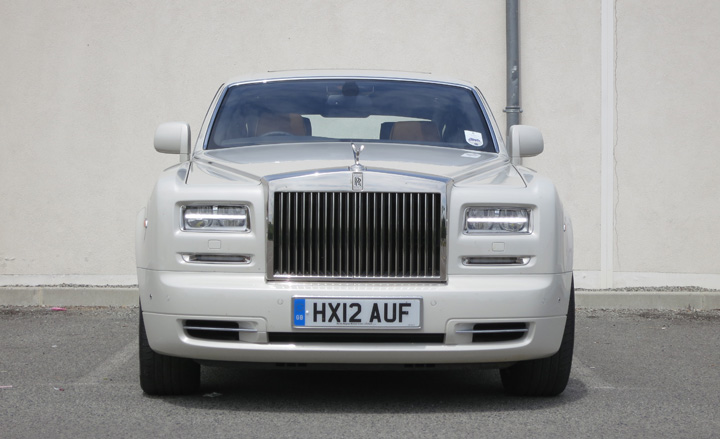
The aesthetic changes are, as one would expect from Rolls-Royce, subtle to the point of invisibility. Gone are the round lights at the front in favour of slender rectangular LED units. And that's about it
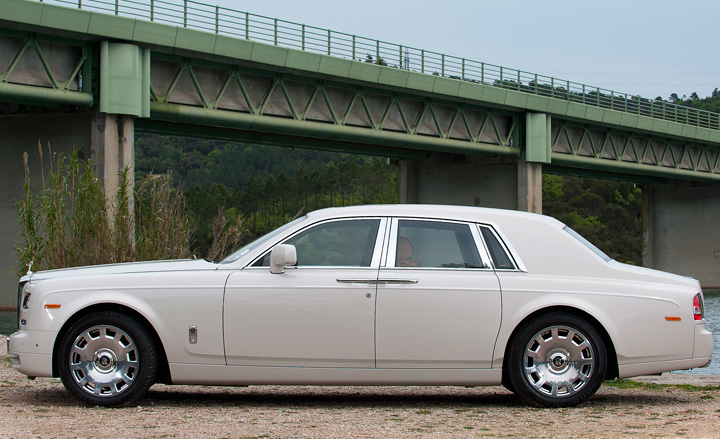
Under the skin, a new gearbox makes the transmission of power from the V12 engine to the wheels an even more effortless and undetectable process
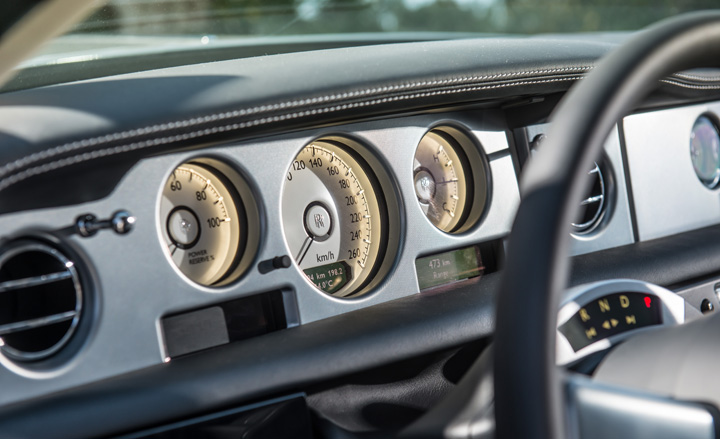
Rolls eschews such vulgarities as a rev counter, favouring a dial reading 'power reserve' instead, supposedly indicating precisely how much oomph is available under one's right foot at any given time
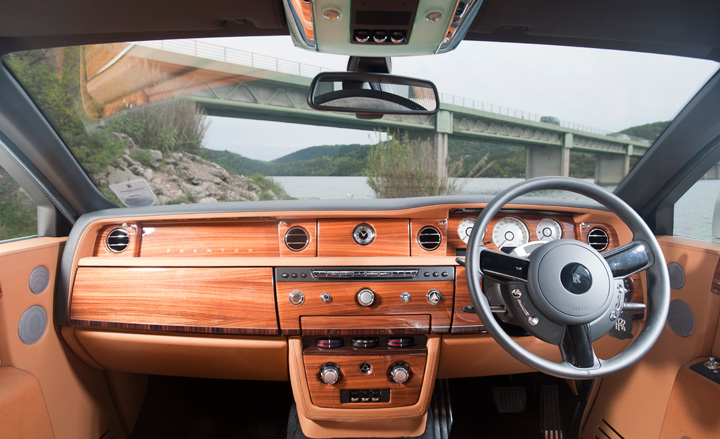
The interior can be finished in walnut or any well-lacquered hardwood of choice
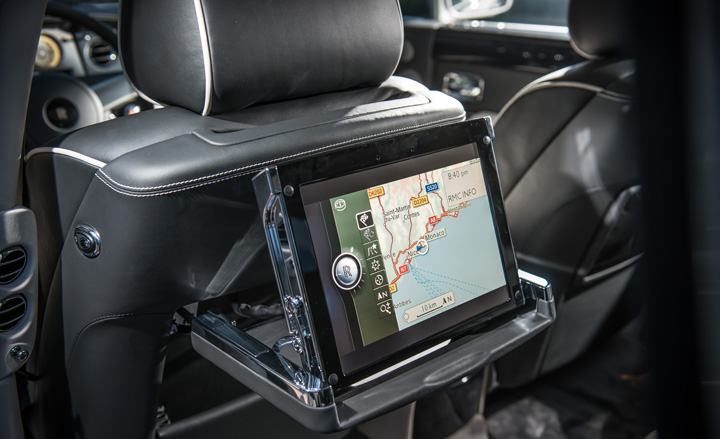
Perhaps the greatest and most tangible benefit of the new model is in the electronics. The Series II Phantoms gets a class-leading piece of software that fills the 8" screen with lavish graphics and easily navigable information

The back seat is still palatial, with carpets so plush you'll want to swap your shoes for slippers as you step into the cabin
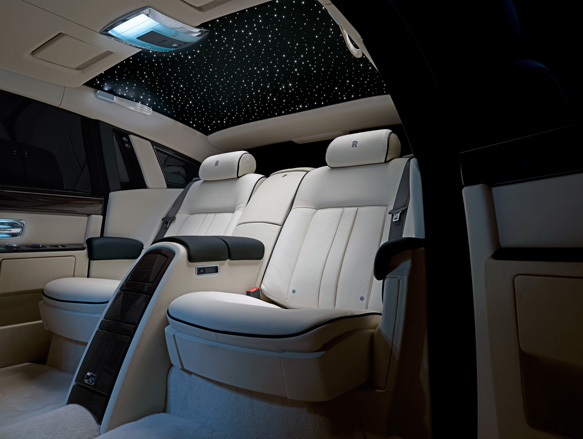
Tricksy but delightful touches like the 'starlight headliner' abound (an upscale version of the glow-in-the-dark stars one sticks on children's bedroom ceilings, albeit with several thousand pounds worth of fibre optics instead)
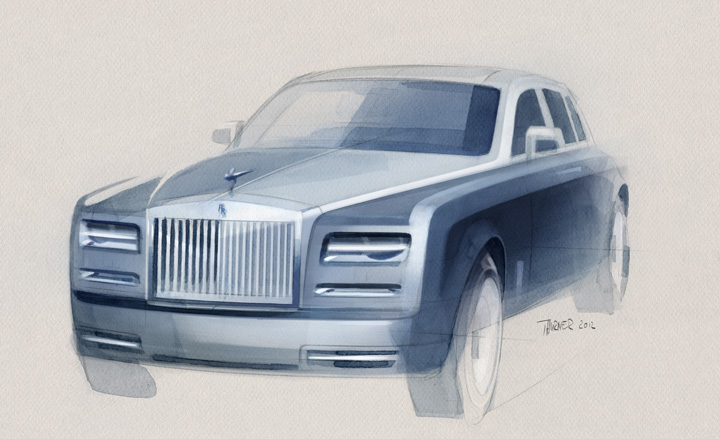
A design sketch of the Rolls-Royce Phantom Series II
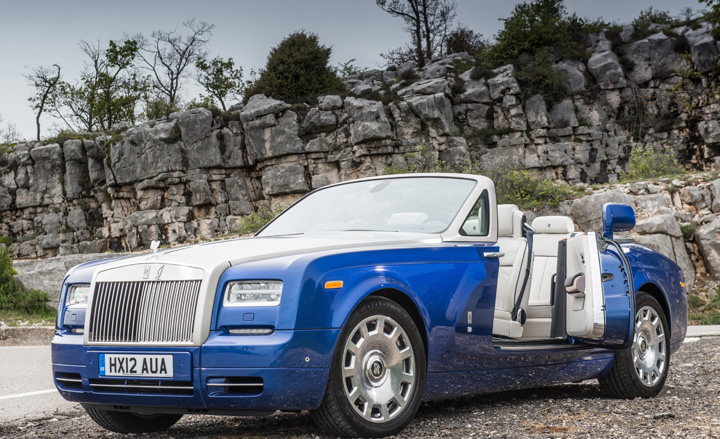
The convertible Rolls-Royce Phantom Drophead Coupé debuted in 2007
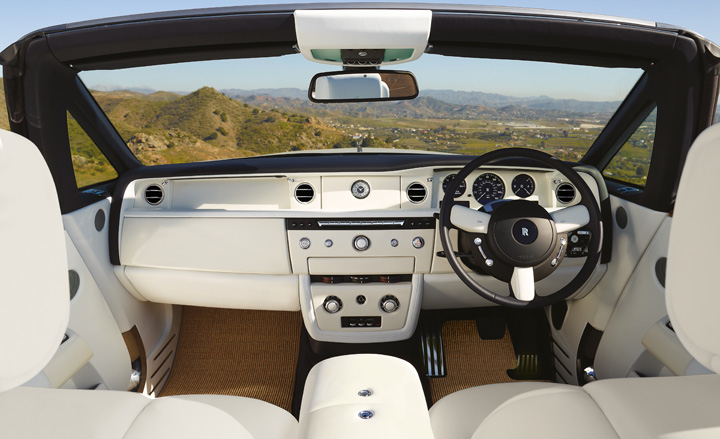
It is essentially a land-going yacht - a vast weekend conveyancer for the plutocrat who might occasionally like to drive him (or her) self
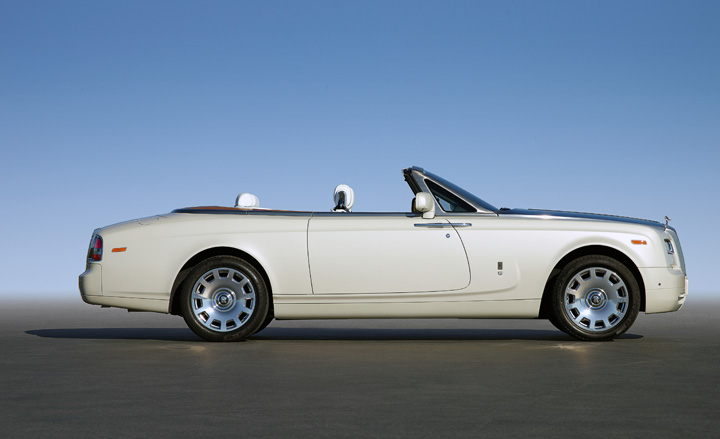
Ample power helps disguise the bulk, but BMW's dynamic wizardry is also much in evidence
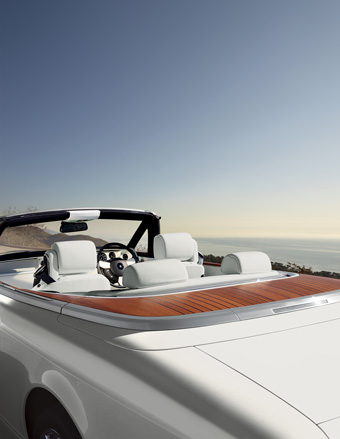
We love the teak 'deck' that envelops the passenger compartment...
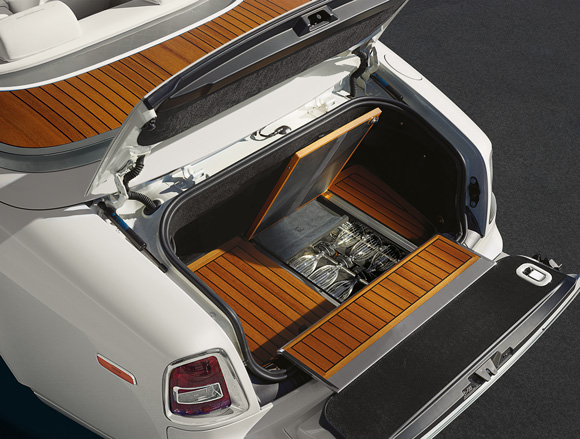
... and the split-level 'picnic' boot, which makes a handy perch to survey the view
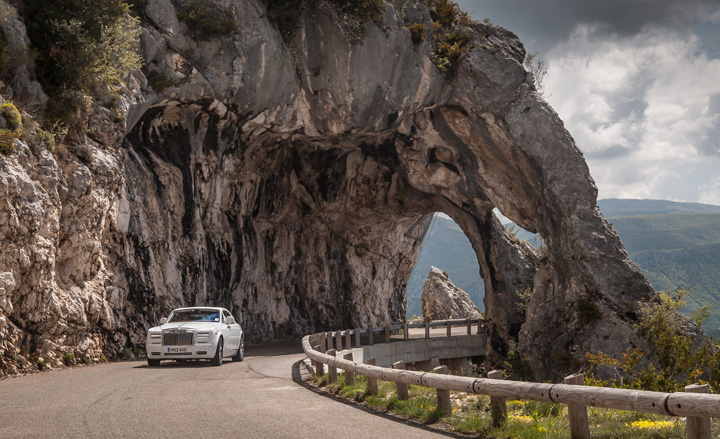
While the Drophead has more than a hint of nautical elegance, with its teak rear deck and sisal floor mats, the Coupé - introduced in 2008 - is a more elegant, sporting affair, if something with the inherent grace of a Rolls-Royce could be defined as sporting

The company's designers softened the bulk with flowing lines that accommodate rear-hinged doors (with push-button closing, naturally), and a drop down picnic boot for two
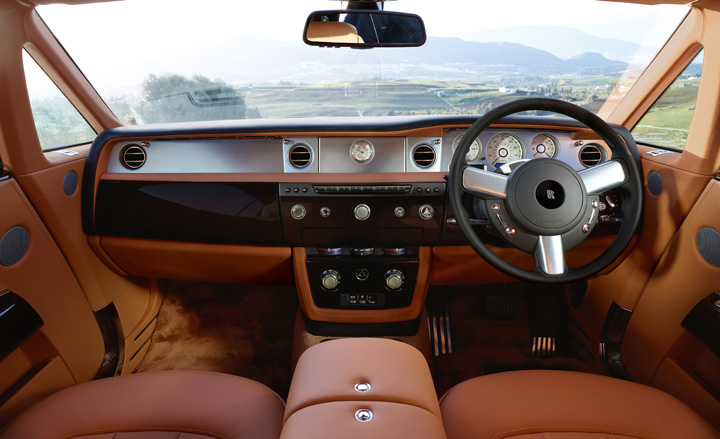
Craftsmanship, engineering, materials and finish are all first rate
Wallpaper* Newsletter
Receive our daily digest of inspiration, escapism and design stories from around the world direct to your inbox.
Jonathan Bell has written for Wallpaper* magazine since 1999, covering everything from architecture and transport design to books, tech and graphic design. He is now the magazine’s Transport and Technology Editor. Jonathan has written and edited 15 books, including Concept Car Design, 21st Century House, and The New Modern House. He is also the host of Wallpaper’s first podcast.
-
 All-In is the Paris-based label making full-force fashion for main character dressing
All-In is the Paris-based label making full-force fashion for main character dressingPart of our monthly Uprising series, Wallpaper* meets Benjamin Barron and Bror August Vestbø of All-In, the LVMH Prize-nominated label which bases its collections on a riotous cast of characters – real and imagined
By Orla Brennan
-
 Maserati joins forces with Giorgetti for a turbo-charged relationship
Maserati joins forces with Giorgetti for a turbo-charged relationshipAnnouncing their marriage during Milan Design Week, the brands unveiled a collection, a car and a long term commitment
By Hugo Macdonald
-
 Through an innovative new training program, Poltrona Frau aims to safeguard Italian craft
Through an innovative new training program, Poltrona Frau aims to safeguard Italian craftThe heritage furniture manufacturer is training a new generation of leather artisans
By Cristina Kiran Piotti
-
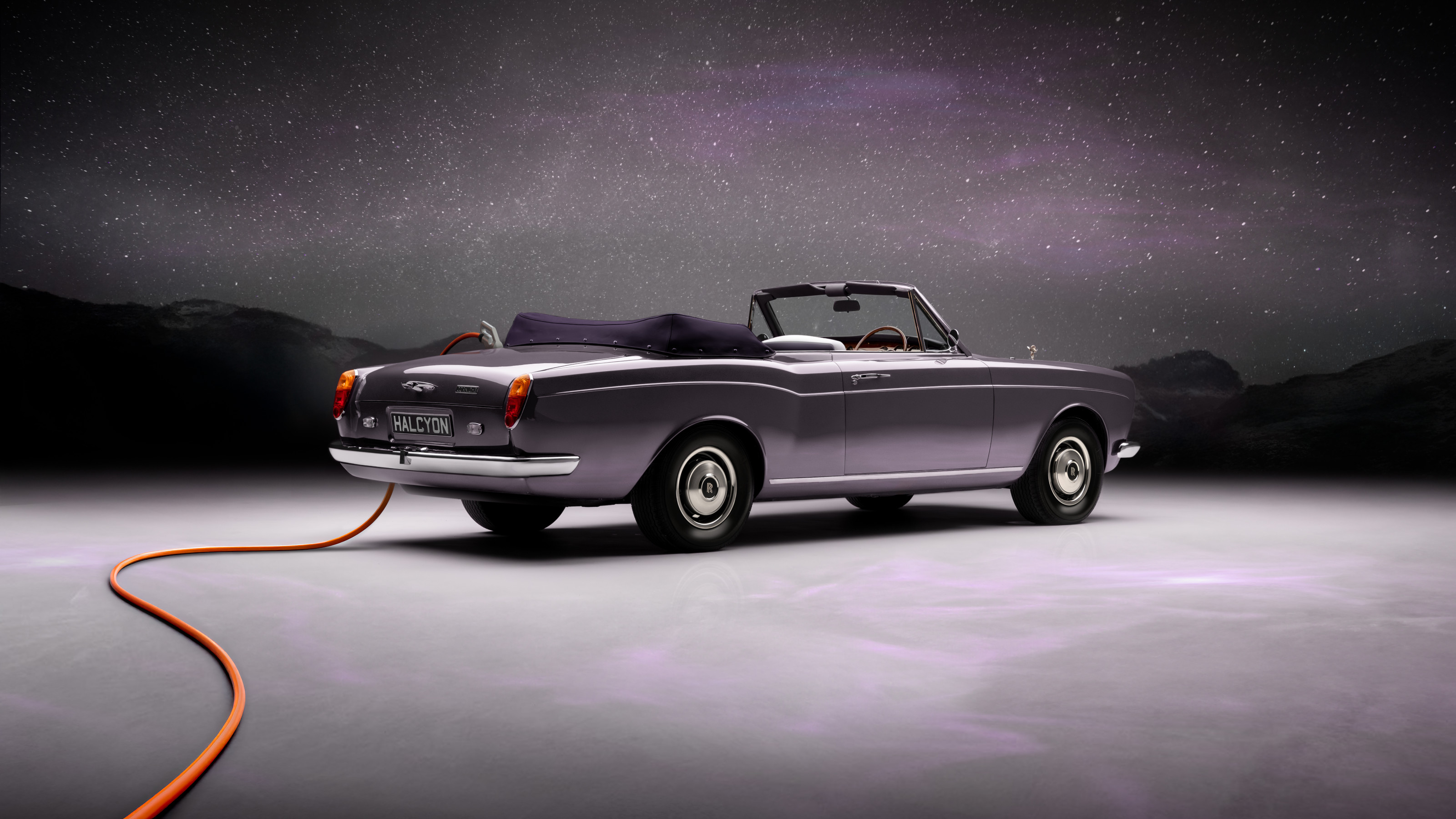 EV start-up Halcyon transforms a classic 1970s Rolls-Royce into a smooth electric operator
EV start-up Halcyon transforms a classic 1970s Rolls-Royce into a smooth electric operatorThis 1978 Rolls-Royce Corniche is the first fruit of a new electric restomod company, the Surrey-based Halcyon
By Jonathan Bell
-
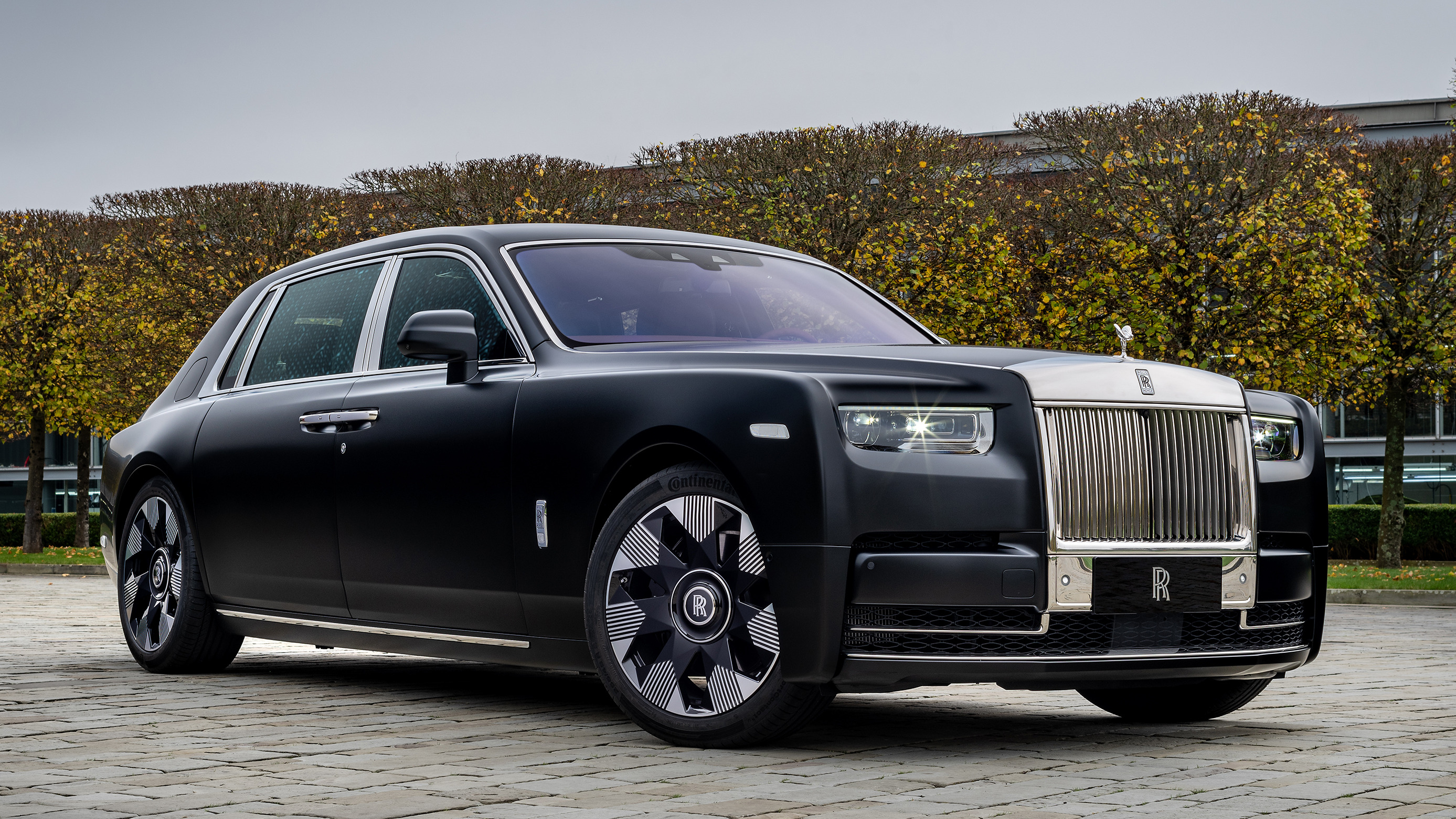 Rolls-Royce Phantom Dragon crosses cultures with a highly crafted approach
Rolls-Royce Phantom Dragon crosses cultures with a highly crafted approachThis one-of-one Phantom Extended has been built as a celebration of the outgoing Year of the Dragon, overseen by Rolls-Royce’s Shanghai Private Office
By Jonathan Bell
-
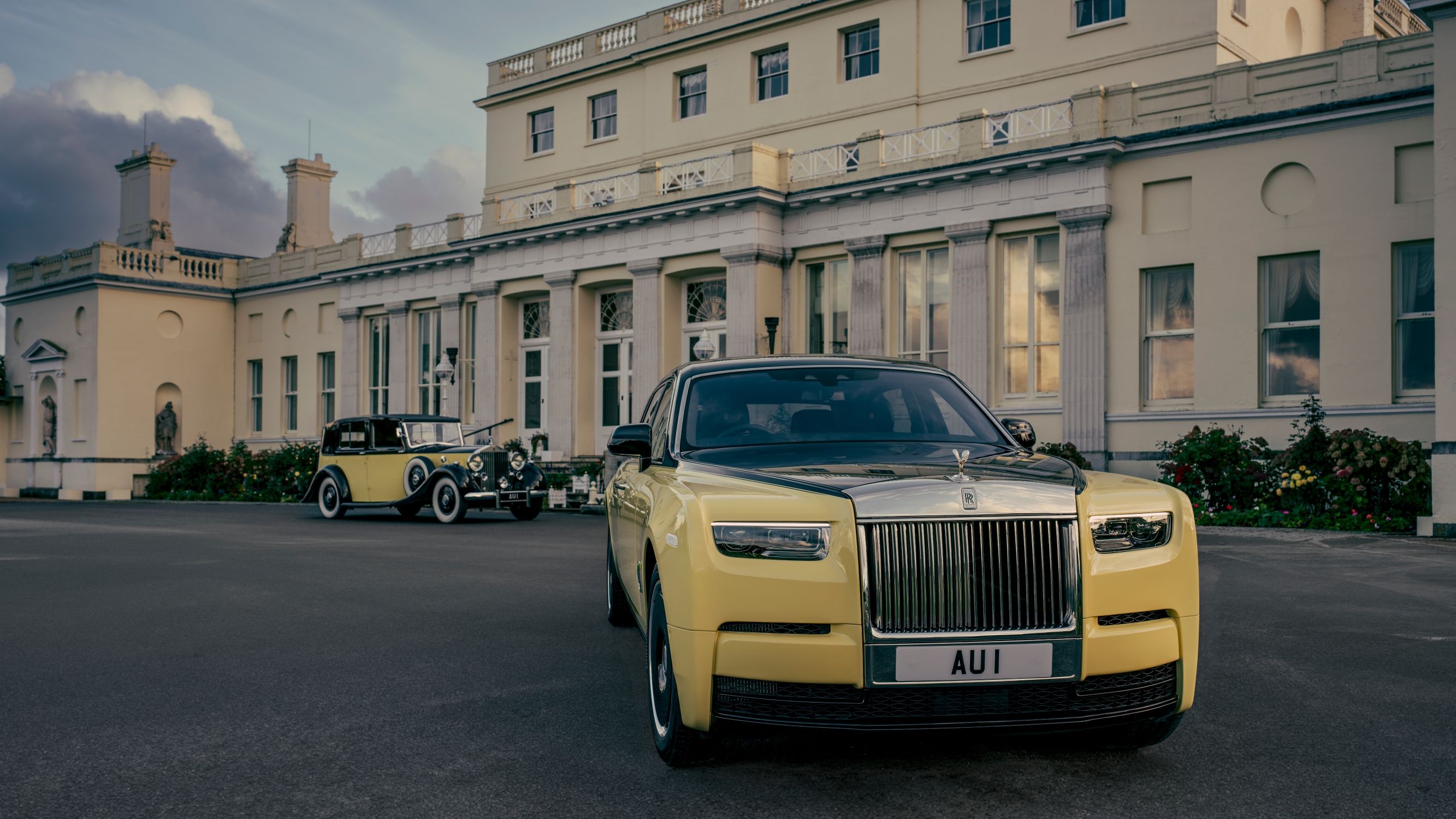 Rolls-Royce re-imagines the classic wheels of one of James Bond’s greatest antagonists
Rolls-Royce re-imagines the classic wheels of one of James Bond’s greatest antagonistsFor one lucky Rolls-Royce owner and Fleming obsessive, this one-off Phantom Goldfinger will blur the lines between cinematic fantasy and real life
By Adam Hay-Nicholls
-
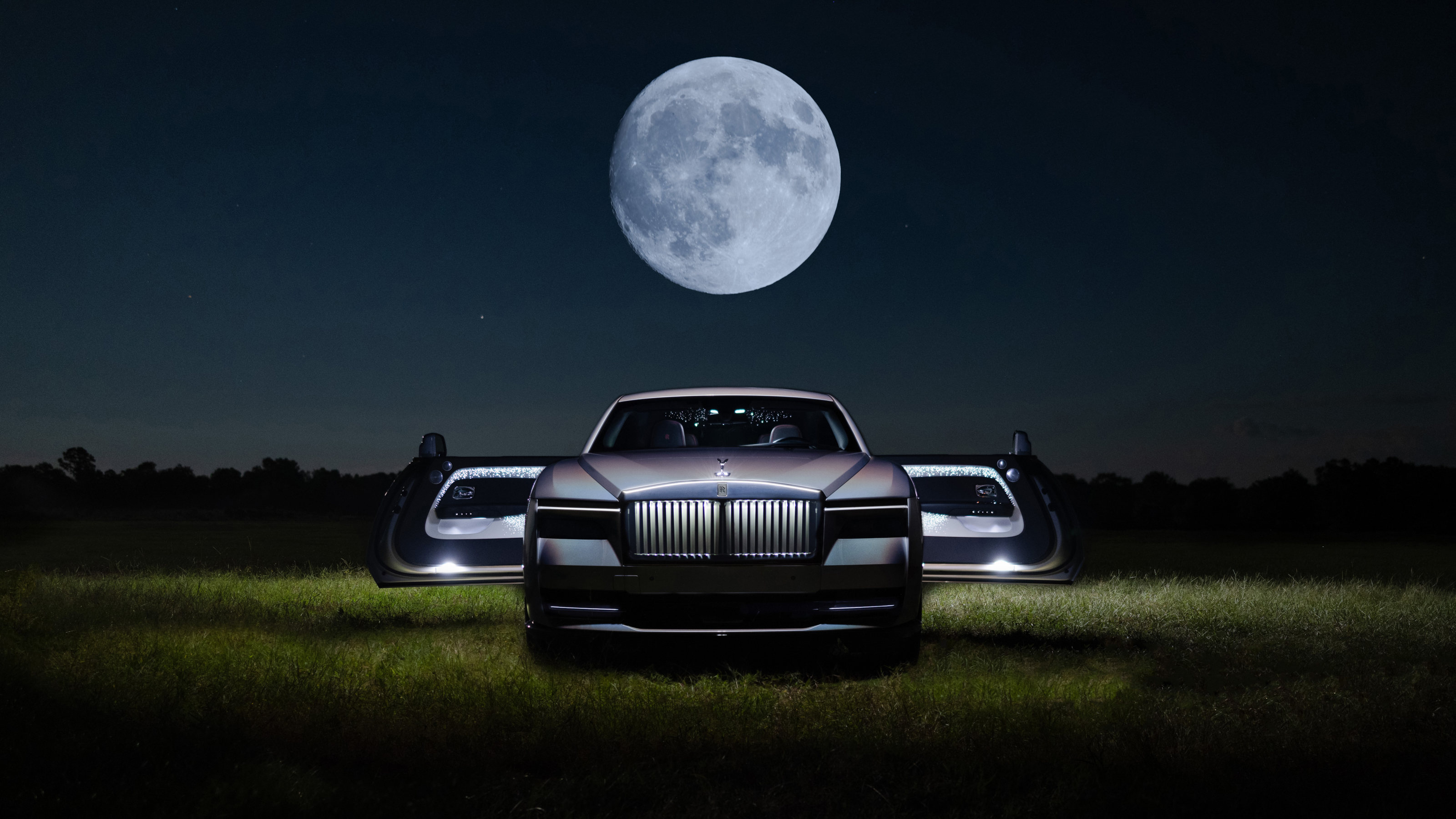 Rolls-Royce’s Bespoke division pushes paint technology to the limits in the Spectre Lunaflair
Rolls-Royce’s Bespoke division pushes paint technology to the limits in the Spectre LunaflairThis one-off commission transforms Rolls-Royce’s all-electric Spectre into a shimmering spectacle inspired by atmospherical effects
By Jonathan Bell
-
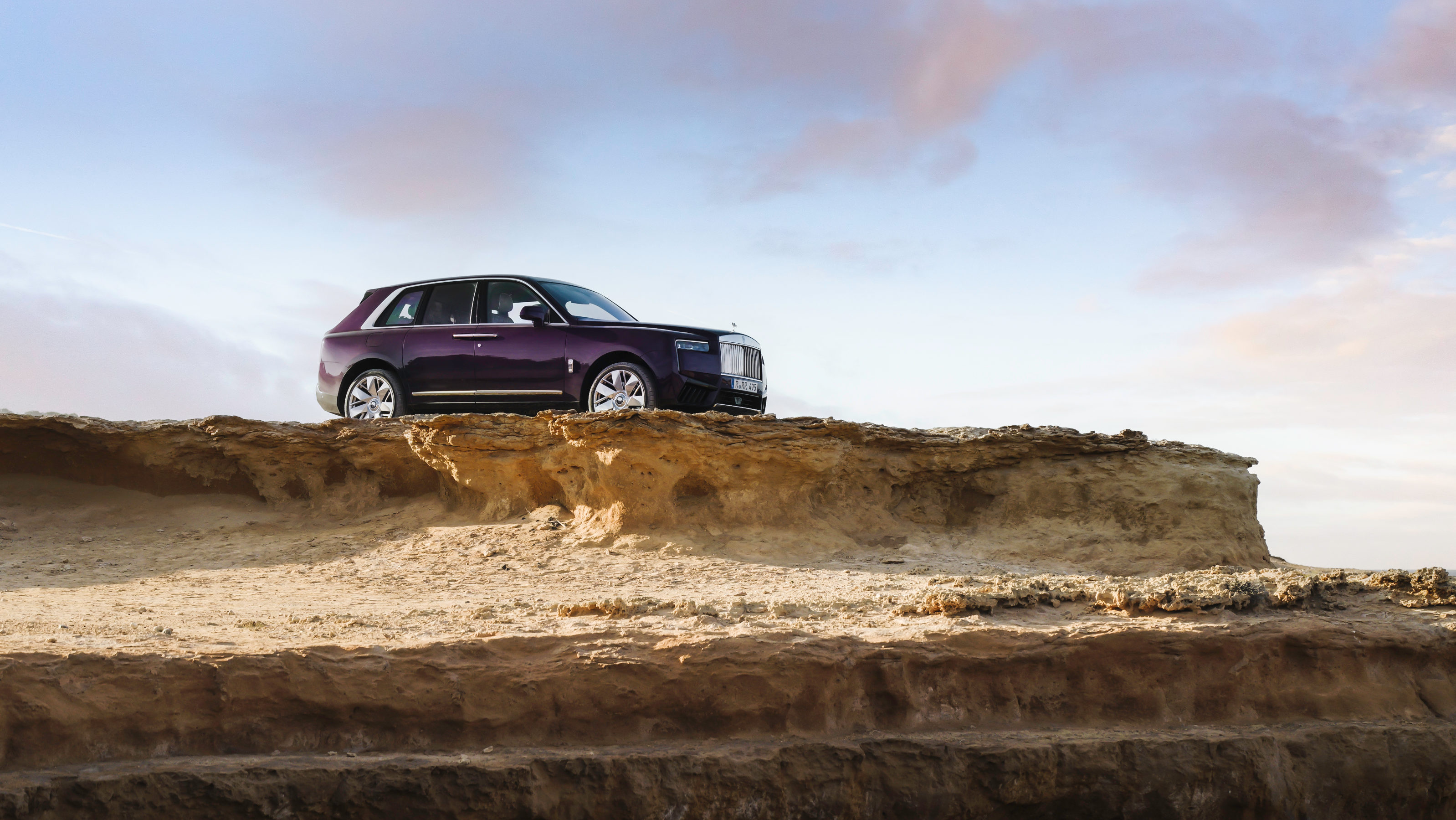 The subtly revised Rolls-Royce Cullinan offers clients an instantly commanding presence
The subtly revised Rolls-Royce Cullinan offers clients an instantly commanding presenceA Rolls-Royce is no longer the ‘best car in the world,’ but the best way to make your mark on automotive culture. Cullinan Series II goes even further into the world of branded storytelling and subtle oneupmanship
By Jonathan Bell
-
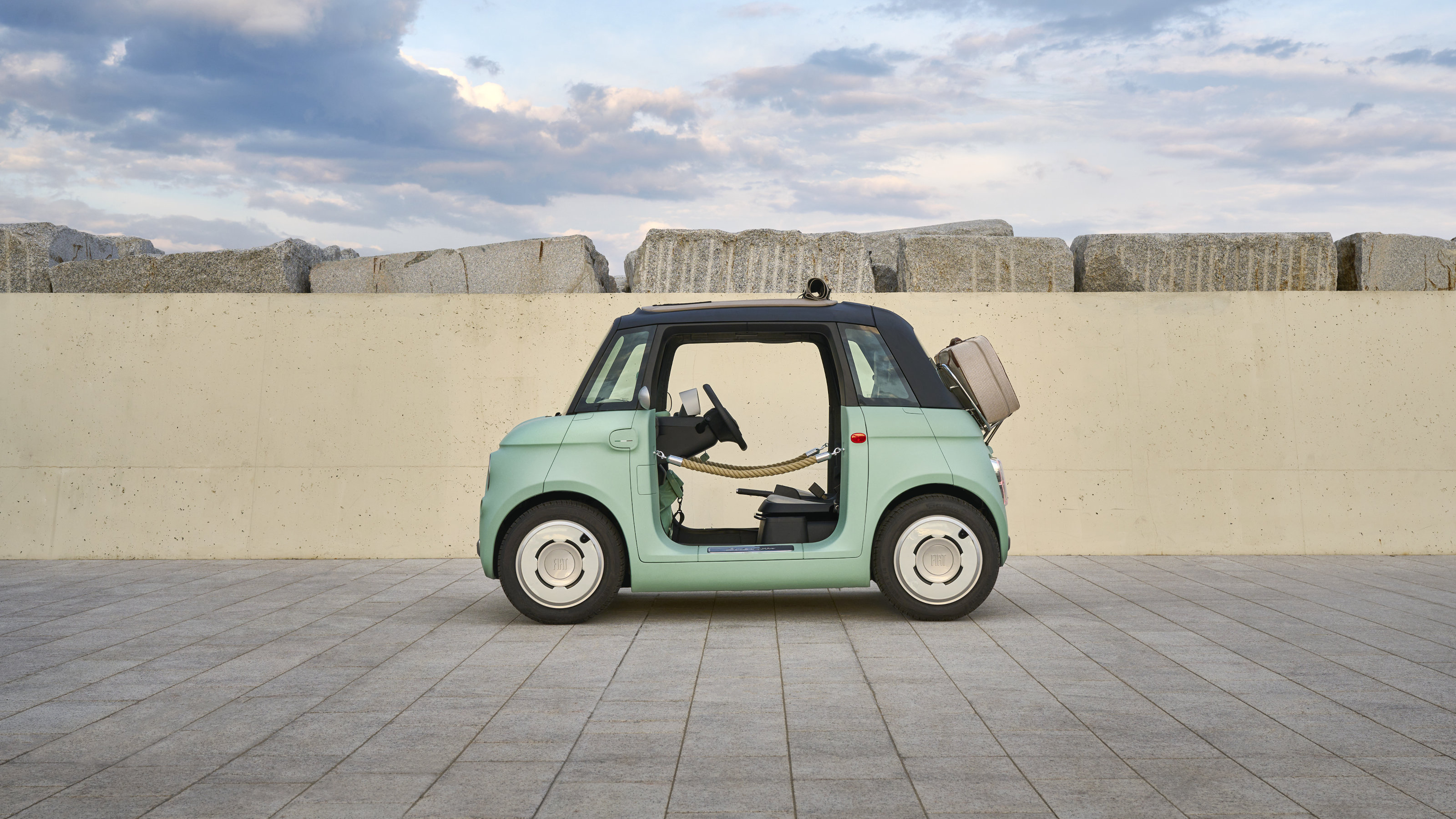 Year in review: top 10 transport design stories of 2023, selected by Wallpaper’s Jonathan Bell
Year in review: top 10 transport design stories of 2023, selected by Wallpaper’s Jonathan BellJonathan Bell’s top 10 transport design stories of 2023 span from electric campers and microcars to flying yachts and classic car recreations
By Jonathan Bell
-
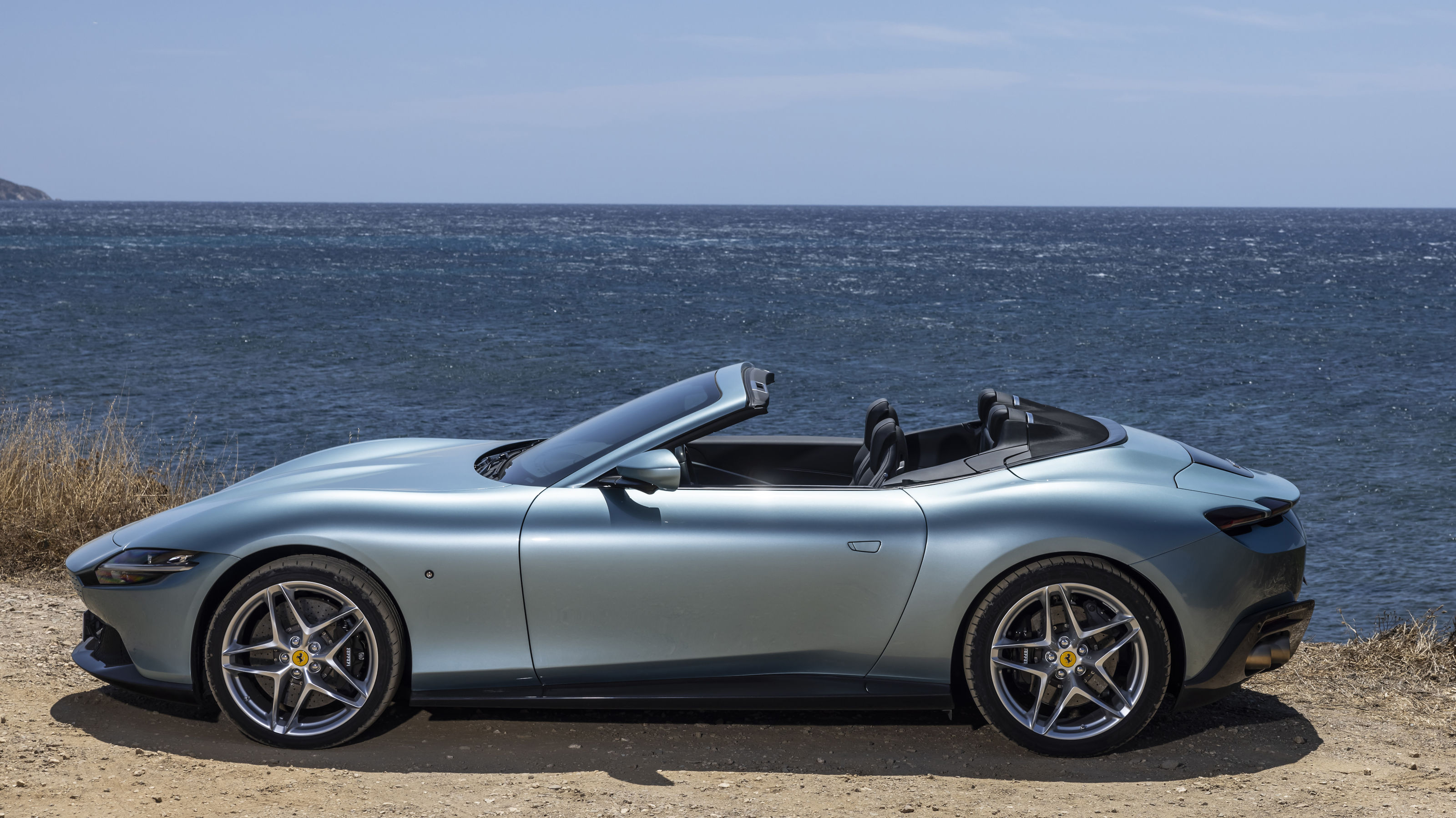 Year in review: the top 10 cars of 2023, as selected by Wallpaper’s Jonathan Bell
Year in review: the top 10 cars of 2023, as selected by Wallpaper’s Jonathan BellWhat were the best four-wheeled offerings of 2023? Transport editor Jonathan Bell takes us through the year’s most intriguing automobiles
By Jonathan Bell
-
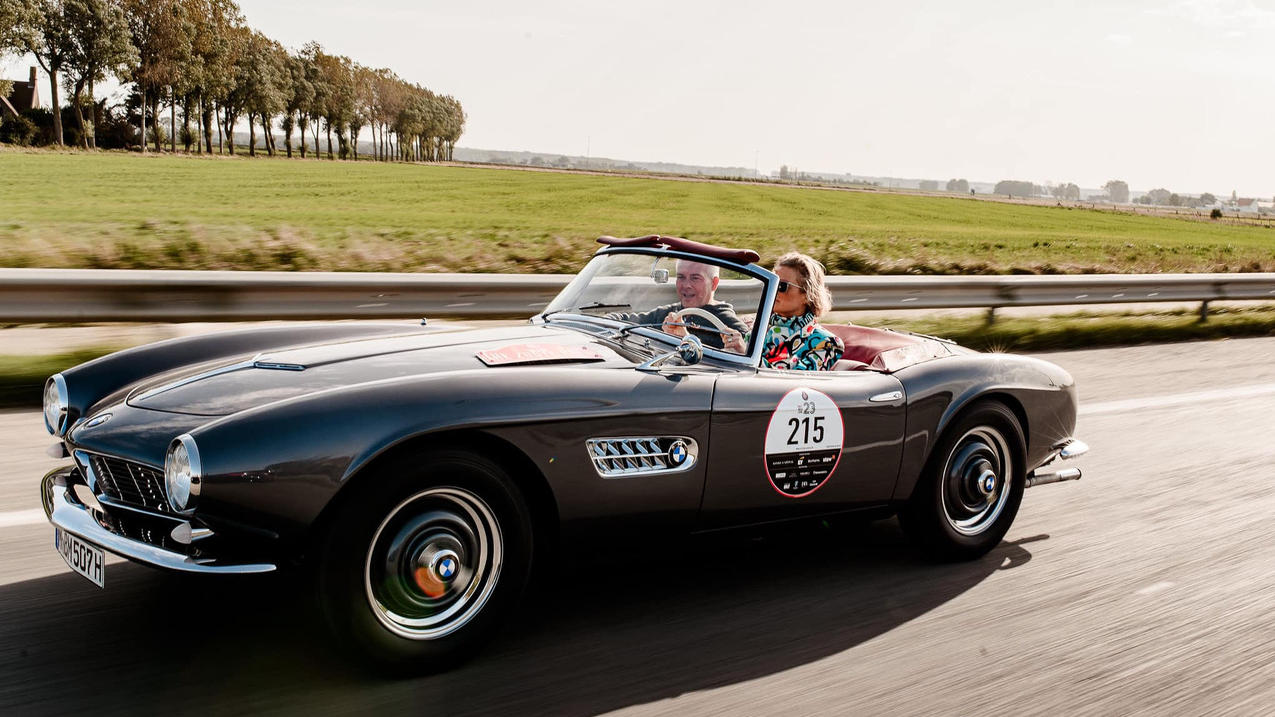 Zoute Grand Prix is a car fest like no other at a pristine Belgian beachside town
Zoute Grand Prix is a car fest like no other at a pristine Belgian beachside townAmy Serafin takes to the well-heeled streets of Knokke-Heist to experience the Zoute Grand Prix, its annual cavalcade of classic car-related events, from a rally to an auction
By Amy Serafin